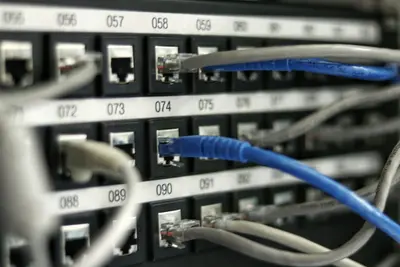🔒 AlmaLinux Security Checklist: Essential Hardening Steps
Ready to fortress your AlmaLinux system against cyber threats? 🛡️ Today we’ll implement essential security hardening steps to protect your server from attacks! Whether you’re securing a web server, database, or desktop system, this comprehensive checklist ensures your AlmaLinux installation is bulletproof! 🚀
🤔 Why is AlmaLinux Security Hardening Critical?
Proper security hardening delivers life-saving protection:
- 📌 Prevent data breaches - Stop attackers from accessing sensitive information
- 🔧 Block malicious attacks - Protect against ransomware, malware, and intrusions
- 🚀 Maintain system availability - Prevent downtime from security incidents
- 🔐 Ensure compliance - Meet security standards and regulations
- ⭐ Protect reputation - Avoid costly security breaches and customer trust loss
🎯 What You Need
Before hardening your AlmaLinux system:
- ✅ Fresh AlmaLinux 9 installation (server or desktop)
- ✅ Root or sudo access
- ✅ Backup of important data and configurations
- ✅ Basic understanding of Linux commands
- ✅ Network access for security updates
📝 Step 1: System Updates and Package Management
Keep your system current with security patches! 🔄
Update System Completely
# Update all packages to latest versions
sudo dnf update -y
# Check for security-only updates
sudo dnf updateinfo list security
# Install security updates only
sudo dnf update --security -y
# Enable automatic security updates
sudo dnf install -y dnf-automatic
# Configure automatic updates
sudo nano /etc/dnf/automatic.conf
# Change these settings:
# upgrade_type = security
# apply_updates = yes
# Enable and start automatic updates
sudo systemctl enable --now dnf-automatic-install.timer
echo "✅ System updates and automatic security patching configured!"Remove Unnecessary Packages
# List installed packages to identify what to remove
dnf list installed | wc -l
# Remove common unnecessary packages
sudo dnf remove -y telnet rsh talk
# Remove development tools if not needed on production
# sudo dnf groupremove -y "Development Tools"
# Clean package cache
sudo dnf clean all
# List services to identify what to disable
systemctl list-unit-files --state=enabled
echo "✅ Unnecessary packages removed!"Security principle: 🛡️ Smaller attack surface = better security!
🔧 Step 2: User Account Security and Authentication
Secure user accounts and authentication mechanisms:
Disable Root SSH Login
# Configure SSH for security
sudo cp /etc/ssh/sshd_config /etc/ssh/sshd_config.backup
# Edit SSH configuration
sudo nano /etc/ssh/sshd_config
# Find and modify these settings:
# PermitRootLogin no
# PasswordAuthentication no
# PubkeyAuthentication yes
# Protocol 2
# MaxAuthTries 3
# ClientAliveInterval 300
# ClientAliveCountMax 2
# Apply changes with sed
sudo sed -i 's/#PermitRootLogin yes/PermitRootLogin no/' /etc/ssh/sshd_config
sudo sed -i 's/#PasswordAuthentication yes/PasswordAuthentication no/' /etc/ssh/sshd_config
sudo sed -i 's/#PubkeyAuthentication yes/PubkeyAuthentication yes/' /etc/ssh/sshd_config
# Restart SSH service
sudo systemctl restart sshd
# Test SSH configuration
sudo sshd -t
echo "✅ SSH hardened - root login disabled!"Set Up SSH Key Authentication
# Generate SSH key pair (on your client machine)
ssh-keygen -t ed25519 -C "[email protected]"
# Copy public key to server
ssh-copy-id username@your-server-ip
# Alternatively, manually copy the key:
mkdir -p ~/.ssh
chmod 700 ~/.ssh
# Paste your public key into ~/.ssh/authorized_keys
chmod 600 ~/.ssh/authorized_keys
# Test key-based authentication
ssh -i ~/.ssh/id_ed25519 username@your-server-ip
echo "✅ SSH key authentication configured!"Implement Strong Password Policies
# Install password quality checking
sudo dnf install -y libpwquality
# Configure password requirements
sudo nano /etc/security/pwquality.conf
# Add these requirements:
echo "minlen = 12
dcredit = -1
ucredit = -1
lcredit = -1
ocredit = -1
minclass = 3
maxrepeat = 2" | sudo tee -a /etc/security/pwquality.conf
# Lock accounts after failed attempts
sudo nano /etc/pam.d/system-auth
# Add: auth required pam_faillock.so deny=5 unlock_time=900
# Set password aging policy
sudo nano /etc/login.defs
# PASS_MAX_DAYS 90
# PASS_MIN_DAYS 7
# PASS_WARN_AGE 7
echo "✅ Strong password policies enforced!"🌟 Step 3: Firewall and Network Security
Configure robust network protection:
Configure Firewalld
# Enable and start firewalld
sudo systemctl enable --now firewalld
# Check default zone
sudo firewall-cmd --get-default-zone
# Set restrictive default zone
sudo firewall-cmd --set-default-zone=drop
# Allow only essential services
sudo firewall-cmd --zone=drop --add-service=ssh --permanent
sudo firewall-cmd --zone=drop --add-service=http --permanent # if web server
sudo firewall-cmd --zone=drop --add-service=https --permanent # if web server
# Allow specific ports if needed
# sudo firewall-cmd --zone=drop --add-port=8080/tcp --permanent
# Remove unnecessary services
sudo firewall-cmd --remove-service=cockpit --permanent
sudo firewall-cmd --remove-service=dhcpv6-client --permanent
# Enable logging for dropped packets
sudo firewall-cmd --set-log-denied=all
# Reload firewall rules
sudo firewall-cmd --reload
# Verify configuration
sudo firewall-cmd --list-all
echo "✅ Firewall configured with restrictive rules!"Network Security Hardening
# Disable IPv6 if not needed
echo "net.ipv6.conf.all.disable_ipv6 = 1
net.ipv6.conf.default.disable_ipv6 = 1" | sudo tee -a /etc/sysctl.conf
# Network security parameters
echo "# Network Security Hardening
net.ipv4.ip_forward = 0
net.ipv4.conf.all.send_redirects = 0
net.ipv4.conf.default.send_redirects = 0
net.ipv4.conf.all.accept_redirects = 0
net.ipv4.conf.default.accept_redirects = 0
net.ipv4.conf.all.secure_redirects = 0
net.ipv4.conf.default.secure_redirects = 0
net.ipv4.conf.all.accept_source_route = 0
net.ipv4.conf.default.accept_source_route = 0
net.ipv4.conf.all.log_martians = 1
net.ipv4.conf.default.log_martians = 1
net.ipv4.icmp_echo_ignore_broadcasts = 1
net.ipv4.icmp_ignore_bogus_error_responses = 1
net.ipv4.tcp_syncookies = 1" | sudo tee -a /etc/sysctl.conf
# Apply sysctl settings
sudo sysctl -p
echo "✅ Network security parameters configured!"Install and Configure Fail2ban
# Install fail2ban for intrusion prevention
sudo dnf install -y fail2ban
# Create local configuration
sudo cp /etc/fail2ban/jail.conf /etc/fail2ban/jail.local
# Configure fail2ban
sudo tee /etc/fail2ban/jail.local << 'EOF'
[DEFAULT]
bantime = 3600
findtime = 600
maxretry = 3
backend = systemd
usedns = warn
[sshd]
enabled = true
port = ssh
logpath = %(sshd_log)s
backend = %(sshd_backend)s
maxretry = 3
bantime = 3600
[postfix]
enabled = false
[apache-auth]
enabled = false
[apache-badbots]
enabled = false
EOF
# Enable and start fail2ban
sudo systemctl enable --now fail2ban
# Check fail2ban status
sudo fail2ban-client status
sudo fail2ban-client status sshd
echo "✅ Fail2ban intrusion prevention configured!"✅ Step 4: SELinux Security and File Permissions
Strengthen access controls and file security:
Configure SELinux Properly
# Check SELinux status
getenforce
# Ensure SELinux is enforcing
sudo setenforce 1
# Make SELinux enforcing permanent
sudo sed -i 's/SELINUX=disabled/SELINUX=enforcing/' /etc/selinux/config
sudo sed -i 's/SELINUX=permissive/SELINUX=enforcing/' /etc/selinux/config
# Install SELinux management tools
sudo dnf install -y setroubleshoot-server setools-console
# Check SELinux policy
sudo sestatus
# View SELinux denials
sudo ausearch -m AVC -ts recent
# Common SELinux fixes for web servers
# sudo setsebool -P httpd_can_network_connect 1
# sudo setsebool -P httpd_can_network_connect_db 1
echo "✅ SELinux configured for maximum security!"Secure File Permissions
# Set restrictive permissions on important files
sudo chmod 600 /etc/ssh/sshd_config
sudo chmod 600 /etc/shadow
sudo chmod 644 /etc/passwd
sudo chmod 644 /etc/group
sudo chmod 600 /boot/grub2/grub.cfg
# Secure home directories
sudo chmod 750 /home/*
# Find world-writable files (potential security risk)
find / -xdev -type f -perm -0002 -ls 2>/dev/null
# Find files with no owner
find / -xdev \( -nouser -o -nogroup \) -ls 2>/dev/null
# Set proper permissions on log files
sudo chmod 640 /var/log/messages
sudo chmod 640 /var/log/secure
# Remove execute permissions from unnecessary files
find /etc -type f -executable -exec chmod -x {} \; 2>/dev/null
echo "✅ File permissions secured!"Implement File Integrity Monitoring
# Install AIDE (Advanced Intrusion Detection Environment)
sudo dnf install -y aide
# Initialize AIDE database
sudo aide --init
# Move database to active location
sudo mv /var/lib/aide/aide.db.new.gz /var/lib/aide/aide.db.gz
# Check system integrity
sudo aide --check
# Create cron job for daily integrity checks
echo "0 3 * * * /usr/sbin/aide --check" | sudo crontab -
# Configure AIDE for important directories
sudo tee -a /etc/aide.conf << 'EOF'
# Custom monitoring rules
/etc NORMAL
/bin NORMAL
/sbin NORMAL
/usr/bin NORMAL
/usr/sbin NORMAL
/root/.ssh NORMAL
EOF
echo "✅ File integrity monitoring configured!"🎮 Quick Examples
Example 1: Web Server Security Hardening 🌐
echo "=== Web Server Security Hardening ==="
# Install and configure mod_security for Apache
sudo dnf install -y httpd mod_security
# Configure Apache security headers
sudo tee /etc/httpd/conf.d/security.conf << 'EOF'
# Security Headers
Header always set X-Content-Type-Options nosniff
Header always set X-Frame-Options DENY
Header always set X-XSS-Protection "1; mode=block"
Header always set Strict-Transport-Security "max-age=63072000; includeSubDomains"
Header always set Referrer-Policy "strict-origin"
# Hide Apache version
ServerTokens Prod
ServerSignature Off
# Disable unnecessary HTTP methods
<Location />
<LimitExcept GET POST HEAD>
Require all denied
</LimitExcept>
</Location>
EOF
# Configure SSL/TLS securely
sudo tee /etc/httpd/conf.d/ssl-security.conf << 'EOF'
SSLProtocol all -SSLv3 -TLSv1 -TLSv1.1
SSLCipherSuite ECDHE-ECDSA-AES256-GCM-SHA384:ECDHE-RSA-AES256-GCM-SHA384
SSLHonorCipherOrder on
SSLSessionTickets off
EOF
# Restart Apache
sudo systemctl restart httpd
echo "✅ Web server security hardened!"Example 2: Database Security Hardening 💾
echo "=== Database Security Hardening ==="
# MySQL/MariaDB security improvements
mysql -u root -p << 'EOF'
-- Remove default databases and users
DROP DATABASE IF EXISTS test;
DELETE FROM mysql.db WHERE Db='test' OR Db='test\\_%';
DELETE FROM mysql.user WHERE User='';
-- Secure root account
UPDATE mysql.user SET Password=PASSWORD('NewStrongRootPassword123!') WHERE User='root';
DELETE FROM mysql.user WHERE User='root' AND Host NOT IN ('localhost', '127.0.0.1', '::1');
-- Create application user with limited privileges
CREATE USER 'appuser'@'localhost' IDENTIFIED BY 'SecureAppPassword123!';
GRANT SELECT, INSERT, UPDATE, DELETE ON appdb.* TO 'appuser'@'localhost';
-- Flush privileges
FLUSH PRIVILEGES;
EOF
# Configure MySQL for security
sudo tee -a /etc/my.cnf.d/security.cnf << 'EOF'
[mysqld]
# Security settings
skip-networking=1
skip-show-database
local-infile=0
skip-symbolic-links=1
# Logging
log-error=/var/log/mysql/error.log
general-log=1
general-log-file=/var/log/mysql/general.log
slow-query-log=1
slow-query-log-file=/var/log/mysql/slow.log
EOF
sudo systemctl restart mariadb
echo "✅ Database security hardened!"Example 3: Comprehensive Security Audit Script ⚡
# Create comprehensive security audit script
cat > ~/security-audit.sh << 'EOF'
#!/bin/bash
echo "=== AlmaLinux Security Audit Report ==="
echo "Date: $(date)"
echo "System: $(hostname)"
echo ""
echo "1. SYSTEM UPDATES:"
updates=$(dnf check-update --security 2>/dev/null | wc -l)
echo "Security updates available: $updates"
echo ""
echo "2. USER ACCOUNTS:"
echo "Active user accounts:"
awk -F: '$7 !~ /\/false|\/nologin/ { print $1 }' /etc/passwd
echo ""
echo "3. SSH CONFIGURATION:"
echo "Root login enabled: $(grep PermitRootLogin /etc/ssh/sshd_config)"
echo "Password auth enabled: $(grep PasswordAuthentication /etc/ssh/sshd_config)"
echo ""
echo "4. FIREWALL STATUS:"
firewall-cmd --state 2>/dev/null || echo "Firewall not running"
echo "Open ports:"
ss -tuln
echo ""
echo "5. SELINUX STATUS:"
sestatus | grep "SELinux status\|Current mode"
echo ""
echo "6. FAILED LOGIN ATTEMPTS:"
grep "Failed password" /var/log/secure | tail -5
echo ""
echo "7. LISTENING SERVICES:"
systemctl list-units --type=service --state=running | grep -E "ssh|http|mysql|ftp"
echo ""
echo "8. FILE PERMISSIONS:"
echo "World-writable files:"
find /etc /usr /var -xdev -type f -perm -0002 2>/dev/null | head -5
echo ""
echo "9. DISK USAGE:"
df -h | grep -vE '^Filesystem|tmpfs|cdrom'
echo ""
echo "10. SYSTEM LOAD:"
uptime
echo ""
echo "=== Audit Complete ==="
EOF
chmod +x ~/security-audit.sh
~/security-audit.sh
# Schedule weekly security audits
echo "0 6 * * 1 ~/security-audit.sh > ~/security-audit-$(date +\%Y\%m\%d).log 2>&1" | crontab -
echo "✅ Comprehensive security audit configured!"🚨 Fix Common Problems
Problem 1: SELinux Denying Legitimate Operations ❌
Symptoms:
- Applications can’t access files/network
- Web server returns 403 errors
- Database connections fail
Try this:
# Check SELinux denials
sudo ausearch -m AVC -ts recent
# Temporarily set SELinux to permissive
sudo setenforce 0
# Test if issue is resolved, then fix properly:
# For web server connectivity:
sudo setsebool -P httpd_can_network_connect 1
sudo setsebool -P httpd_can_network_connect_db 1
# For file access issues:
sudo restorecon -R /var/www/html
# Set SELinux back to enforcing
sudo setenforce 1Problem 2: Locked Out of SSH ❌
Try this:
# If you have console access:
# 1. Login via console (VirtualBox, VMware, physical access)
# 2. Check SSH configuration:
sudo nano /etc/ssh/sshd_config
# 3. Temporarily enable password authentication:
# PasswordAuthentication yes
# 4. Restart SSH:
sudo systemctl restart sshd
# 5. Test connection, then re-secureProblem 3: Firewall Blocking Necessary Traffic ❌
Check these things:
# List current firewall rules
sudo firewall-cmd --list-all
# Check if service needs to be allowed
sudo firewall-cmd --zone=drop --add-service=http --permanent
sudo firewall-cmd --zone=drop --add-port=8080/tcp --permanent
# Check firewall logs
sudo journalctl -f -u firewalld
# Reload firewall rules
sudo firewall-cmd --reload📋 Complete Security Checklist
| Security Area | Task | Status |
|---|---|---|
| System Updates | ✅ Enable automatic security updates | □ |
| User Security | ✅ Disable root SSH login | □ |
| Authentication | ✅ Configure SSH key authentication | □ |
| Password Policy | ✅ Enforce strong passwords | □ |
| Firewall | ✅ Configure restrictive firewall rules | □ |
| Intrusion Prevention | ✅ Install and configure Fail2ban | □ |
| SELinux | ✅ Enable and configure SELinux | □ |
| File Permissions | ✅ Set secure file permissions | □ |
| File Integrity | ✅ Configure AIDE monitoring | □ |
| Network Security | ✅ Harden network parameters | □ |
| Service Hardening | ✅ Secure web/database services | □ |
| Monitoring | ✅ Set up security auditing | □ |
💡 Tips for Success
- Defense in depth 🌟 - Layer multiple security controls
- Regular updates 🔐 - Keep system and software current
- Monitor continuously 🚀 - Watch logs and audit reports
- Test configurations 📝 - Verify security settings work properly
- Document everything 🔄 - Keep records of security changes
🏆 What You Learned
Congratulations! Now you can:
- ✅ Implement comprehensive system hardening on AlmaLinux
- ✅ Configure secure authentication and access controls
- ✅ Set up firewall and intrusion prevention systems
- ✅ Enable SELinux and file integrity monitoring
- ✅ Audit and maintain security configurations
🎯 Why This Matters
Your hardened AlmaLinux system provides:
- 🚀 Maximum security against current and emerging threats
- 🔐 Compliance readiness with security standards and regulations
- 📊 Reduced risk of data breaches and system compromises
- ⚡ Professional confidence in your security posture
Remember: Security is not a destination but a journey - regularly review and update your security measures as threats evolve. With these hardening steps, your AlmaLinux system has enterprise-grade protection! ⭐
You’ve successfully implemented comprehensive security hardening for AlmaLinux! Your system is now protected with multiple layers of security controls that will defend against attacks and keep your data safe! 🙌




